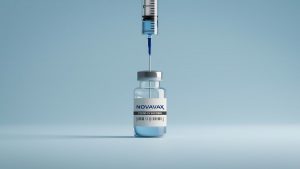Elite athletes who suffer a sudden cardiac arrest might have genetics that make them more vulnerable to heart disease, a new study suggests.
Analysis of more than 280 top-level endurance athletes revealed that 1 in 6 have measures that would normally suggest heart disease and reduced heart function, researchers report in the journal Circulation.
Those athletes also carried a rich load of genes associated with heart disease, researchers said.
“The phenomenon of the athletes’ heart has long been known, but we were the first team to investigate the role an athlete’s genetic makeup plays in their heart function and structure,” researcher Dr. Diane Fatkin, a molecular cardiologist at the Victor Chang Cardiac Research Institute in Sydney, said in a news release.
“What we have found is that there are far more profound changes than thought and that a high number of these athletes do have altered heart function,” she continued.
A series of recent near-tragedies on playing fields and in gymnasiums have prompted increased interest in how heavy exercise can affect the hearts of elite athletes.
In late July, University of Southern California freshman guard Bronny James – son of Lakers basketball star LeBron James — collapsed from a cardiac arrest during an offseason workout.
And Buffalo Bills safety Damar Hamlin suffered an on-field cardiac arrest during a 2022 football game, following a hit to the chest during a tackle.
The athletes included in the new study are participants in the Pro@Heart study, an international project aimed at assessing the long-term health effects of high-level exercise.
“We have long known that elite athletes have very different hearts to the general population,” researcher Andre La Gerce, head of sports cardiology at the Baker Heart and Diabetes Institute in Melbourne, Australia, said in a news release.
“Exercise promotes profound heart changes. The heart is large in all elite athletes but there is still considerable variation ranging from large to enormous. The long-term significance of the most extreme changes is not yet certain,” La Gerce added.
Participating athletes underwent heart imaging and exercise testing in six cities across Australia and Belgium, as well as genetic analysis.
About 16% had heart measures normally associated with heart disease, such as an enlarged heart, irregular rapid heartbeat, and changes in the heart’s left ventricle – the chamber responsible for pumping oxygenated blood out into the body.
This reduced heart function was only observed when the athletes were at rest. When exercising, their hearts functioned at “super normal” levels, showing that the organs are able to substantially increase pumping action when needed to boost cardiac output.
Further, researchers found that athletes with the highest load of genes related to heart disease were 11 times more likely to have reduced heart function measures.
“It’s very important we don’t think of these athletes as having sick hearts because they can still function at a very high level,” Fatkin said. “But we don’t know what the long-term effect will be and if this means these athletes will go on to develop cardiomyopathy.”
The study highlights the need to closely monitor the heart health of high-level athletes, La Gerce said.
“We want to keep our athletes healthy and prevent them from suffering a sudden cardiac arrest,” he said. “The better we understand the athletes’ heart, the more we will be able to identify risks in advance of tragedy.”
Researchers plan to follow these same athletes over the next 25 years to see whether they do go on to develop heart problems.
“Regular exercise is associated with clear health benefits,” said researcher Hein Heidbuchel, a professor of cardiology at Antwerp University Hospital in Belgium. “But there may be a small group with a genetic predisposition that is good for developing an elite sports heart at a young age, but could be dangerous in the long term if they continued exercising at this very high level.”
More information
The American Heart Association has more about sudden cardiac deaths in athletes.
SOURCE: Victor Chang Cardiac Research Institute, news release, Dec. 18, 2023
Copyright © 2025 HealthDay. All rights reserved.






















-300x200.jpg)

